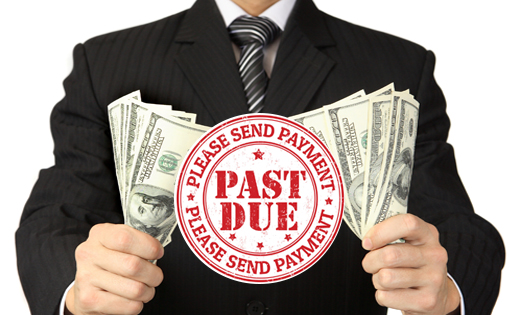BY ANDI GRAY
Dilemma: Our receivables are becoming a problem and we need to get paid! We were busy last quarter and didn’t stay on top of collections. Now, even current clients are slowing down with their payments. I’m starting to worry about paying our bills. How much accounts receivable is enough—or too much?
Thoughts of the Day: There are business cycles when things seem to dry up, and falling into one of those cycles can make things difficult for any business. Carrying accounts receivable means you risk not getting paid, and not carrying accounts receivable can mean leaving money on the table. Don’t hesitate to rein in a good customer. Make collecting money everyone’s job, and have tools to make that job easier.
Many businesses have failed with too much of a good thing (high demand) followed by too much of a bad thing (unfulfilled promises to pay). If you’re supplying a service, make sure you’re getting paid for your efforts. There are times when your company is flush with cash and times when things get tight: The same happens to other businesses, too. A few common influencers include big bid awards in the spring, paying taxes before the October deadline, and clearing out the bank account at year end.

Make a list of the cycles you’ve noticed in your industry. Lay them out in a calendar so you know when the peaks and valleys occur. Get ahead of the valleys by stepping up pressure to get paid a month or two before one hits. Ask for prepayments when companies are at the top of their cash-flow cycles.
Minimize reasons your company might not get paid. Have a written scope of work signed by a client’s authorized officer. Specify what happens if payment terms are not met. Whatever excuse is given, the client made a choice that is affecting your company’s bottom line.
Beware of a client pressing you to negotiate away all of your company’s leverage. Grabbing for a great deal that seems too good to be true is a warning sign to exercise caution and restraint in your credit authorization. Keep a close watch on accounts receivable. Set limits on waiting for payments. When things get busy, make it someone’s weekly job to watch and report on the aging of every account.
Send out warnings at 30 days past due, rather than at 60. If a client is 60 days late, they may be juggling vendors who made deliveries two months earlier. If so, their focus is now on those new orders, which may include moving to new vendors if you shut them off. Once they don’t need you anymore, your leverage is down to legal maneuvering, which can cost time and money. However, walking away from business can be a mistake. Don’t leave money on the table for a competitor if you can afford to extend terms and if the customer is credit-worthy.
Check the credit-worthiness of every customer before negotiating payment terms. Talk to your potential client’s vendors: They’ll know if their customer is paying or not. It’s easy to find out who companies work with—just ask. Most potential clients will eagerly share details. They’re proud of their organizations’ strengths, which include the people and other companies they do business with.
Looking for a good book? Collect Your Money: A Guide to Promoting Success and Professionalism in the Credit Department by Linda McWha
Pass your notes from those discussions to whoever’s responsible for checking credit. They can use that information as a springboard for casual conversation with vendors to find out how they’re doing when it comes to collecting from their clients. Pretty soon, you’ll have a good idea if that new client of yours pays their bills on time. Periodically repeat the process and keep a book of vendor references to call.
Back up informal conversations with information available from a credit reporting agency. Create a file on each client and drop each report into the file. That way, you can look for trends if there’s ever a question.
Set standard parameters for how much credit is extended, and for how long. Set up collection letters that automatically go out every 10 days. As soon as a deal is signed, call the client’s finance department to introduce your company. Get their names and contact information, from accounts payable to the head of finance.
Don’t let a buyer in the company buffalo you. Always call to verify that an invoice has been forwarded to accounting. Find out the standard chain of command to approve an invoice. Document how long it should take for an invoice to clear each stage. Confirm that your invoices are getting to the appropriate parties on schedule.
Check with others who work in your industry for examples of their credit policies. Look to the companies that always seem to have great cash flow for successful examples.
Make sure everyone on your team understands that an order isn’t complete until it is paid in full. Ask everyone to pass information to the finance department. Get sales involved in collecting payment. If you have a chronically late payer who wants to utilize your services again, get their payment upfront, including enough to cover what’s outstanding on the last payment before their next booking goes through. [CD0515]

